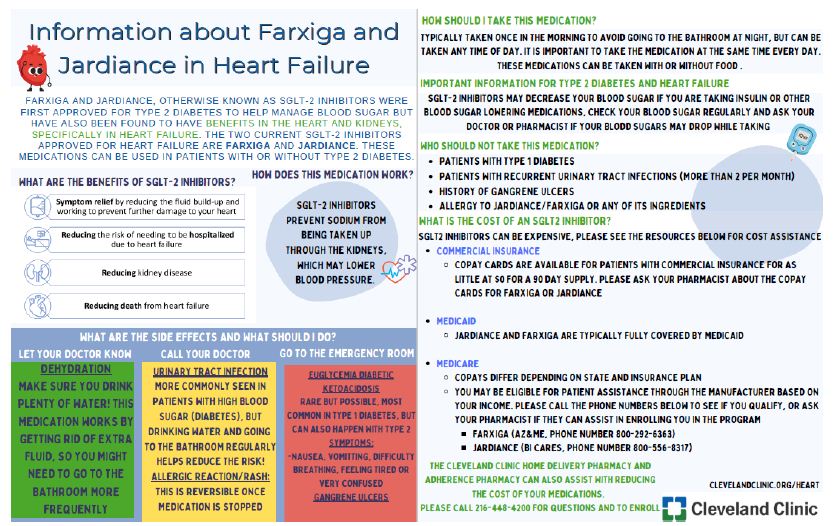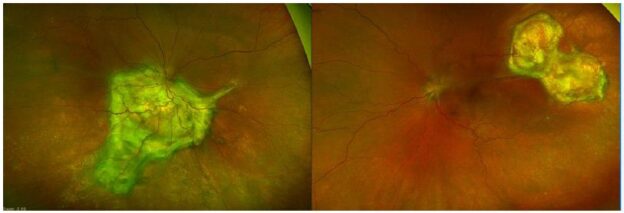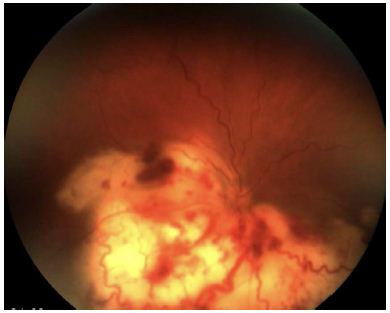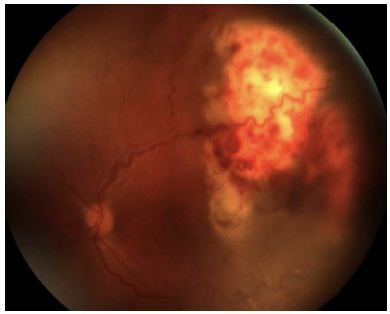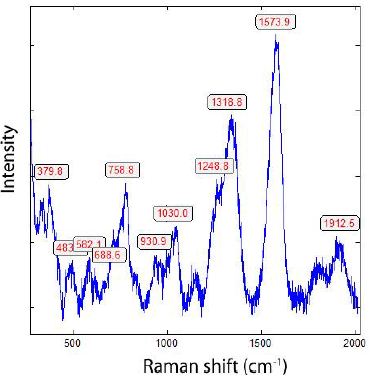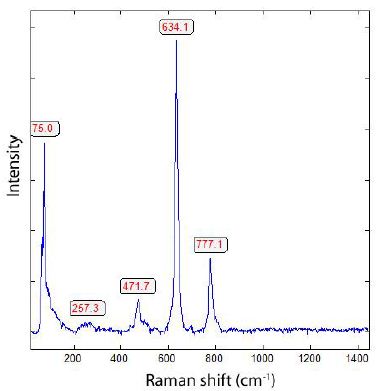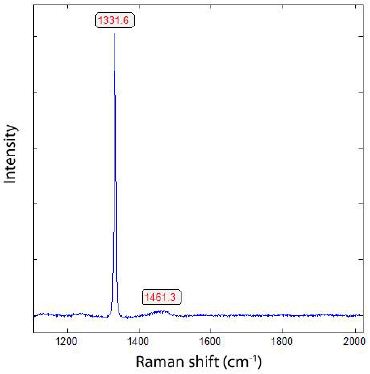Abstract
Despite increase in the number of cosmetic rhinoplasty between women worldwide, its different aspects remained unclear. This study explores the impact of cosmetic rhinoplasty on psychosocial outcomes and quality of life among Iranian women attending cosmetic surgery clinics in Tehran. Participants, aged 18 to 56 years, completed questionnaires one month before surgery and three months post-surgery. The sample of 235 women was randomly selected from two private clinics in central and northern Tehran, with the sample size determined using Cochran’s formula. Out of 400 eligible participants, 301 patients completed the pre-surgery questionnaires, and 240 returned the post-surgery questionnaires. Results indicated significant improvements in quality of life (t=6.91, p < 0.001, d=0.41) and self-esteem (t=4.57, p < 0.001, d=0.63) following rhinoplasty, though no significant changes were observed in physical or mental health. The study highlights the need to address psychological factors that may limit the positive outcomes of cosmetic surgery. These findings are valuable for healthcare providers, emphasizing the importance of comprehensive pre- and post-operative counselling to optimize patient outcomes.
Keywords
Cosmetic rhinoplasty, Quality of life, Psychosocial outcomes, Physical health, Self-esteem, Women
Introduction
Cosmetic surgery, also known as aesthetic surgery, involves elective procedures designed to improve an individual’s appearance. These procedures include liposuction, breast augmentation, rhinoplasty (nose surgery), blepharoplasty (eyelid surgery), and rhytidectomy (facelift). Rhinoplasty, in particular, has seen significant popularity in recent years, both globally and in Iran. In 2022, liposuction was the most commonly performed cosmetic surgery worldwide, followed by breast augmentation, eyelid surgery, and abdominoplasty (tummy tuck). Among non-surgical procedures, Botox injections, hyaluronic acid (dermal fillers), laser hair removal, and chemical peels are among the most common [1-6].
In Iran, approximately 320,000 cosmetic surgeries were conducted in 2022, with rhinoplasty being one of the most popular. The desire for physical enhancement is natural across all human societies, but it holds particular significance for women, who are often more concerned with their appearance compared to men. Many women use cosmetic surgery to improve their social status and reinforce their personal identity [4]. This trend has been amplified in modern societies where women feel pressure to meet stringent and sometimes unattainable beauty standards. The dominant culture’s validation of these standards contributes to increased anxiety regarding appearance, leading many women to undergo costly and potentially harmful procedures [7-10].
This study specifically focuses on cosmetic rhinoplasty, one of the most commonly performed cosmetic surgeries in Iran. Despite its popularity, there is a limited body of research examining the psychosocial outcomes and quality of life impacts following this procedure. While previous studies have shown that many patients experience dissatisfaction with body image, social pressures, and cultural influences related to beauty standards, little research has specifically focused on the impact of rhinoplasty on quality of life, physical health, social well-being, and self-esteem in Iranian women [11].
Iran’s unique cultural and social factors, such as the influence of media, societal pressures, and the importance of beauty in shaping personal identity, have contributed to an increasing demand for cosmetic procedures, particularly rhinoplasty. These factors necessitate an in-depth exploration of the psychological and psychosocial effects of such surgeries on Iranian women. Thus, this study aims to evaluate the effectiveness of cosmetic rhinoplasty on the quality of life, physical health, social well-being, and self-esteem of Iranian women. By examining these factors before and after surgery, this research will contribute valuable insights into how rhinoplasty impacts the lives of women, addressing both the benefits and potential drawbacks of such a popular cosmetic procedure [12].
Given the limited data on this subject in Iran, the findings from this study could help inform medical practitioners, policymakers, and counsellors, enabling them to provide more effective psychological support and guidance for individuals considering or recovering from cosmetic rhinoplasty.
Methodology
Participants and Procedures
This study employed a semi-experimental design [11] to investigate the psychosocial outcomes and quality of life following cosmetic surgery. The participants were women aged 18 to 56 years who visited cosmetic surgery clinics in Tehran, Iran. They completed questionnaires at two time points: one month before and up to three months after their cosmetic procedures. Exclusion criteria included individuals with alcohol or drug addiction, mental illnesses, congenital nasal deformities (e.g., polyps and nasal deviation), prior nasal trauma, cleft lip and nose, previous rhinoplasty or septoplasty, obsessive–compulsive disorder, or major depression. Participants provided informed consent before being included in the study. Randomized sampling was employed, with participants selected based on clinic visitation days.
Sampling was conducted in two stages to ensure geographic diversity. First, two private clinics in central and northern Tehran were randomly selected. Second, patients who had undergone cosmetic surgeries within the prior one to three months were randomly chosen. The sample size was determined using Cochran’s formula, resulting in 235 distributed questionnaires, accounting for potential incomplete or missing data.
Measures
Several standardized instruments were employed to assess the impact of cosmetic surgery on quality of life, psychological well-being, and social functioning. These included the Glasgow Benefit Inventory (GBI), measuring changes in physical, mental, and social health dimensions; the Rhinoplasty Outcomes Evaluation (ROE), assessing satisfaction with rhinoplasty; and the Deriford Appearance Scale (DAS59), evaluating appearance-related concerns and their influence on self-esteem. Reliability coefficients for these tools were 0.85, 0.80, and 0.88, respectively. Additionally, the main questionnaire gathered demographic data and included 29 questions addressing appearance awareness, social support, and physical health, rated on a five-point Likert scale [13,14].
Data Analysis
Data were analysed using SPSS software. Descriptive statistics, including relative frequency and means, were calculated, and paired-sample t-tests were performed to assess differences between pre- and post-surgery measures. Participants provided voluntary informed consent and were thoroughly briefed about the study’s purpose, procedures, potential risks, and their right to withdraw at any time without penalty. Confidentiality was ensured by anonymizing data and securely storing it with access restricted to the research team. Measures were implemented to minimize psychological or emotional discomfort, with participants encouraged to seek counselling if needed.
Results
The demographic characteristics of the subjects are included gender, age, education level, occupation, the number of cosmetic surgeries, and marital status shown in Table 1. The comparison of the studied variables before and after the aesthetic rhinoplasty in the subjects studied is shown in Table 2. The results of the t-tests indicate significant changes in some psychosocial indicators following cosmetic surgery. Participants reported a notable improvement in quality of life, with mean scores increasing from 3.16 (SD=0.86) before surgery to 3.52 (SD=0.89) after surgery, (t (239)=6.91, p < .001, d=0.41), reflecting a moderate positive effect. Additionally, a significant increase in self-esteem was observed, with mean scores rising from 3.24 (SD=0.67) to 3.41 (SD=0.76), (t (239)=4.57, p < .001, d=0.63), indicating a large effect size. Social well-being also showed slight improvement, with mean scores increasing from 3.09 (SD=0.49) to 3.16 (SD=0.51), (t (239)=2.34, p=.02, d=0.15), though the effect size was small.
Table 1: Demographic characteristics of female participants before and after cosmetic surgery.
|
Characteristic |
Before Surgery (n) |
After Surgery (n) |
| Age Distribution | ||
| 15-24 years |
72 |
75 |
| 25-34 years |
32 |
70 |
| 35-44 years |
53 |
47 |
| 45-56 years |
21 |
31 |
| Education Level | ||
| Elementary/Associate |
71 |
110 |
| Bachelor’s Degree |
68 |
81 |
| Master’s Degree |
18 |
36 |
| Doctoral Degree |
3 |
5 |
| Marital Status | ||
| Single |
94 |
112 |
| Married |
36 |
52 |
| Divorced |
21 |
41 |
| Widowed |
10 |
16 |
| Employment Status | ||
| Employed |
93 |
139 |
| Unemployed |
67 |
80 |
| Number of Surgeries | ||
| Two or fewer surgeries |
113 |
113 |
| More than two surgeries |
122 |
122 |
| Total Respondents |
235 |
235 |
Table 2: Quality of life, physical health, social health, and self-esteem before and after surgery.
|
Variable |
Mean (SD) Before Surgery | Mean (SD) After Surgery | Cohen’s d | t |
p |
| Quality of Life |
3.16 (0.86) |
3.52 (0.89) | 0.41 | 6.91 |
<0.001 |
| Physical Health |
3.84 (0.61) |
3.85 (0.58) | 0.02 | 0.24 |
0.81 |
| Social Health |
3.09 (0.49) |
3.16 (0.51) | 0.15 | 2.34 |
0.02 |
| Mental Health |
1.57 (0.60) |
1.52 (0.55) | 0.08 | 1.24 |
0.22 |
| Self-Esteem |
3.24 (0.67) |
3.41 (0.76) |
0 |
4.5.637 |
<0.001 |
In contrast, no significant changes were observed in physical or mental health after surgery. Physical health scores remained nearly unchanged, with pre-surgery mean scores of 3.84 (SD=0.61) and post-surgery mean scores of 3.85 (SD=0.58), (t (239)=0.24, p=.81, d=0.02), suggesting no meaningful impact. Similarly, mental health scores showed no significant difference, with a slight decrease from 1.57 (SD=0.60) to 1.52 (SD=0.55) post-surgery, (t (239)=1.24, p=.22, d=0.08), indicating a minimal or negligible effect. These findings suggest that while cosmetic surgery significantly improved self-esteem, quality of life, and social well-being, it had no substantial impact on physical or mental health. This underscores the selective benefits of cosmetic surgery in addressing psychosocial dimensions without extending to physical or mental health outcomes.
Discussion
This study makes a significant contribution to the expanding literature on cosmetic surgery by specifically examining the psychosocial and quality-of-life outcomes of rhinoplasty in Iranian women, a population uniquely shaped by cultural and societal expectations. While rhinoplasty is globally recognized as one of the most common cosmetic procedures, its impacts on psychological and social well-being are underexplored, particularly in culturally distinct contexts like Iran. By evaluating outcomes such as self-esteem, quality of life, and social and mental health, this research provides a comprehensive understanding of the broader implications of rhinoplasty. Findings revealed marked improvements in self-esteem and quality of life, suggesting that rhinoplasty can positively influence psychosocial well-being. This aligns with previous studies that emphasize the role of cosmetic procedures in reducing social anxiety and fostering a positive self-concept. These insights provide a valuable framework for healthcare providers, enabling them to address the psychological dimensions of cosmetic surgery and support patients in achieving holistic benefits [15,16].
The demographic characteristics of the participants underscore important trends among rhinoplasty candidates, offering insights into their underlying motivations. This study identified a predominance of younger individuals, especially those aged 15–24, consistent with existing research that associates youth with heightened sensitivity to societal beauty standards and peer influences. Medical recommendations to delay cosmetic surgery until facial growth is complete may explain the lower representation of individuals under 20 years old. The decline in demand among older participants may reflect shifting priorities with age, as seen in other studies highlighting a focus on inner well-being over physical appearance in later life stages. These findings emphasize the role of societal norms and age-specific pressures in shaping cosmetic surgery trends, underscoring the need for tailored preoperative education that reflects patients’ developmental and social contexts [17-19].
Education and marital status trends observed in the study further reveal the evolving motivations for rhinoplasty. The significant representation of participants with higher education levels contrasts with earlier research that reported a dominance of candidates with lower educational attainment. This shift may reflect broader access to education and heightened awareness of cosmetic procedures among more informed populations. Additionally, the higher prevalence of single women undergoing rhinoplasty, consistent with findings (2022), suggests that societal pressures to enhance physical appearance may be more pronounced among individuals seeking romantic or social opportunities. However, the substantial representation of married women highlights the changing perceptions of cosmetic surgery as a form of self-care and empowerment across different life stages. Employment status also emerged as a key factor, with employed individuals comprising a large proportion of candidates, underscoring the increasing importance of physical appearance in professional and social domains [20-24].
The study further highlights the impact of rhinoplasty on quality of life, corroborating findings from previous research that emphasize the psychological benefits of aesthetic surgery. Significant improvements in self-image and reductions in emotional distress were reported, contributing to greater social confidence and life satisfaction [25,26]. Consistent with studies by [27,28], this research affirms that aesthetic rhinoplasty can enhance quality of life by addressing dissatisfaction with appearance. Moreover, studies by [29,30] suggest that satisfaction with cosmetic surgery outcomes increases over time, indicating that patients may benefit from long-term psychosocial improvements. However, some studies have challenged these findings, emphasizing the need for a nuanced understanding of the multi-dimensional nature of quality of life and its interplay with socio-economic variables [31]. Integrating psychological preparation into preoperative care could help patients set realistic expectations and maximize the benefits of rhinoplasty.
While this study observed no significant changes in physical health outcomes, this aligns with the nature of cosmetic surgeries, which are primarily aesthetic rather than functional. This finding underscores the importance of managing patient expectations regarding the procedure’s limitations, focusing instead on its psychological and social benefits. The modest improvements in social well-being, including enhanced interpersonal relationships and reduced social anxiety, suggest that rhinoplasty can serve as a catalyst for improved social functioning. However, these outcomes are influenced by cultural and individual factors, such as societal beauty norms and personal resilience. To maximize these benefits, a multidisciplinary approach that includes counselling and social skills training may be necessary. By integrating these findings into clinical practice, healthcare providers can offer more comprehensive care, ensuring that patients achieve both psychological and physical satisfaction from cosmetic procedures [32-35].
In conclusion, this study emphasizes the profound psychosocial benefits of rhinoplasty, particularly its ability to enhance self-esteem and quality of life. The findings support the incorporation of psychological evaluations and support mechanisms into pre- and postoperative care plans, allowing healthcare providers to address the holistic needs of patients. Additionally, the interplay between societal, cultural, and individual factors in shaping rhinoplasty trends highlights the need for personalized patient education and care strategies. By fostering realistic expectations and addressing both aesthetic and emotional dimensions, healthcare providers can ensure the long-term success and satisfaction of cosmetic surgery patients. Further research into the cultural and psychosocial determinants of cosmetic surgery demand can enrich understanding and inform best practices in this evolving field [36].
Limitations and Future Directions
This study has several limitations. The short follow-up period (three months post-surgery) restricts the ability to assess long-term psychosocial and clinical outcomes, such as sustained changes in mental or physical health. Additionally, the random sampling from two clinics in Tehran may not represent the entire Iranian population, given the country’s geographic and cultural diversity. Reliance on self-report measures introduces potential biases, including social desirability and recall bias. Future research should incorporate longitudinal designs to explore long-term effects and include more diverse samples to improve the generalizability of results. Moreover, employing qualitative methods, such as interviews, could provide deeper insights into patients’ subjective experiences. Investigating the role of pre-existing mental health conditions and their influence on postoperative outcomes could also enhance understanding and improve pre-surgery psychological screening and support programs.
Conflict of Interest
The authors declare that there is no conflict of interests.
References
- Mironica A, Popescu CA, George D, Tegzeșiu AM, Gherman CD (2024) Social Media Influence on Body Image and Cosmetic Surgery Considerations: A Systematic Review. Cureus 16(7): e65626. [crossref]
- Marco K, Andrea B, Andrea R, Valeriano V (2022) Aesthetic Plastic Surgery. In M. Maruccia & G. Giudice (Eds.), Textbook of Plastic and Reconstructive Surgery (pp. 509-520) Springer International Publishing. Available From: https://doi.org/10.1007/978-3-030-82335-1_33
- Borujeni LA, Pourmotabed S, Abdoli Z, Ghaderi H, Mahmoodnia L, Sedehi M, Hasanpour Dehkordi A (2020) A Comparative Analysis of Patients’ Quality of Life, Body Image and Self-confidence Before and After Aesthetic Rhinoplasty Surgery. Aesthetic Plastic Surgery 44(2): 483-490. [crossref]
- Bonell S, Murphy SC, Austen E, Griffiths S (2022) When (fake) beauty turns ugly: Plastic surgery as a moral violation. Current Psychology 41(8): 5444-5457.
- Buck II DW (2021) Review of Plastic Surgery (2nd ed.) Elsevier. Available From: https://shorturl.at/oWoAL
- Tokgöz E, Carro MA (2023) Robotics Applications in Facial Plastic Surgeries. Cosmetic and Reconstructive Facial Plastic Surgery (pp. 307-341). Available From: https://doi.org/10.1007/978-3-031-31168-0_10
- Ghorbani A, Piroozi B, Safari H, Shokri A, Aqaei A, et al. (2022) Prevalence of elective cosmetic surgery and its relationship with socioeconomic and mental health: A cross‐sectional study in west of Iran. Health Science Reports 5(6): e872. [crossref]
- Qorbani Q (2023) The Age of the World Picture and the Meaning of Human being’s Life. Religious Inquiries 12(1): 57-70.
- Walker CE, Krumhuber EG, Dayan S, Furnham A (2021) Effects of social media use on desire for cosmetic surgery among young women. Current Psychology 40(7): 3355-3364.
- Johnson AR, Bravo MG, Granoff MD, Lee BT (2019) Cultural insensitivity pervasive in Spanish online cosmetic surgery resources: A call to action. Annals of Plastic Surgery 82(4S): S228-S233. [crossref]
- Miller CJ, Smith SN, Pugatch M (2020) Experimental and quasi-experimental designs in implementation research. Psychiatry Research 283: 112452. [crossref]
- Najjarzadehghalati F, Gradmann C, Kaboodkhani R (2022) A Qualitative Study of Iranian Candidates’ Awareness, Expectations and Motivational Factors Related to Nose Job Surgery (Rhinoplasty) Electronic Journal of General Medicine 19(2): 1-7.
- Hendry J, Chin A, Swan IRC, Akeroyd MA, Browning GG (2016) The Glasgow Benefit I nventory: A systematic review of the use and value of an otorhinolaryngological generic patient‐recorded outcome measure. Clinical Otolaryngology 41(3): 259-275. [crossref]
- Carr T, Harris D, James C (2000) The Derriford Appearance Scale (DAS‐59): A new scale to measure individual responses to living with problems of appearance. British Journal of Health Psychology 5(2): 201-215.
- Patel PN, Kandathil CK, Buba CM, Neves JC, Cobo R, et al.(2022) Global Practice Patterns of Dorsal Preservation Rhinoplasty. Facial Plastic Surgery & Aesthetic Medicine 24(3): 171-177. [crossref]
- Pentina I, Taylor DG, Voelker TA (2009) The roles of self‐discrepancy and social support in young females’ decisions to undergo cosmetic procedures. Journal of Consumer Behaviour 8(4): 149-165.
- Pearlman RL, Wilkerson AH, Cobb EK, Morrissette S, Lawson FG, et al. (2022) Factors Associated with Likelihood to Undergo Cosmetic Surgical Procedures Among Young Adults in the United States: A Narrative Review. Clinical, Cosmetic and Investigational Dermatology 15: 859-877. [crossref]
- Kaye K, Paprottka F, Escudero R, Casabona G, Montes J, et al. (2020) Elective, Non-urgent Procedures and Aesthetic Surgery in the Wake of SARS-COVID-19: Considerations Regarding Safety, Feasibility and Impact on Clinical Management. Aesthetic Plastic Surgery 44(3): 1014-1042. https://doi.org/10.1007/s00266-020-01752-9. [crossref]
- Åberg E, Kukkonen I, Sarpila O (2020) From double to triple standards of ageing. Perceptions of physical appearance at the intersections of age, gender and class. Journal of Aging Studies 55: [crossref]
- Reghunathan M, Parmeshwar N, Gallus KM, Gosman AA (2020) Diversity in plastic surgery: Trends in female representation at plastic surgery meetings. Annals of Plastic Surgery 84(5S): S278-S282. [crossref]
- Ligh CA, Lett E, Broach RB, Enriquez FA, Jordan A, et al. (2020) The impact of race, age, gender, income, and level of education on motivations to pursue cosmetic surgery and surgeon selection at an academic institution. Plastic and Reconstructive Surgery 145(5): 932e-939e. [crossref]
- Chowdhury S, Verma S, Debnath T (2022) Self-Esteem in Rhinoplasty Patients: A Comparative Study. Indian Journal of Otolaryngology and Head & Neck Surgery 74(S2): 1571-1575. [crossref]
- Di Gesto C, Nerini A, Policardo GR, Matera C (2022) Predictors of Acceptance of Cosmetic Surgery: Instagram Images-Based Activities, Appearance Comparison and Body Dissatisfaction Among Women. Aesthetic Plastic Surgery 46(1): 502-512. [crossref]
- Sobanko JF, Dai J, Gelfand JM, Sarwer DB, Percec I (2018) Prospective cohort study investigating changes in body image, quality of life, and self-esteem following minimally invasive cosmetic procedures. Dermatologic Surgery 44(8): 1121-1128. [crossref]
- Jones HE, Faulkner HR, Losken A (2022) The psychological impact of aesthetic surgery: A mini-review. Aesthetic Surgery Journal Open Forum 4: ojac077. [crossref]
- Jacono A, Chastant RP, Dibelius G (2016) Association of patient self-esteem with perceived outcome after face-lift surgery. JAMA Facial Plastic Surgery 18(1): 42-46. [crossref]
- Wähmann MS, Bulut OC, Bran GM, Veit, J. A, Riedel F (2018) Systematic Review of Quality-of-Life Measurement After Aesthetic Rhinoplasty. Aesthetic Plastic Surgery 42(6): 1635-1647. [crossref]
- Schwitzer, J. A, Sher, S. R, Fan, K. L, Scott, A. M, Gamble L, Baker SB (2015) Assessing patient-reported satisfaction with appearance and quality of life following rhinoplasty using the FACE-Q appraisal scales. Plastic and Reconstructive Surgery 135(5): 830e-837e. [crossref]
- Ercolani M, Baldaro B, Rossi N, Trombini G (1999) Five-year follow-up of cosmetic rhinoplasty. Journal of Psychosomatic Research 47(3): 283-286. [crossref]
- Domela Nieuwenhuis I, Luong, K. P, Vissers, L. C, Hummelink S, Slijper, H. P, et al.(2022) Assessment of patient satisfaction with appearance, psychological well-being, and aging appraisal after upper blepharoplasty: A multicenter prospective cohort study. Aesthetic Surgery Journal 42(4): 340-348. [crossref]
- Heggenstaller AK (2017) Thero of cosmetic surgery in the embodied experience of female beauty: A narrative study in Bloemfontein, South Africa. Available From:
https://scholar.ufs.ac.za/bitstream/handle/11660/9031/HeggenstallerAK.pdf?sequence=1&isAllowed=y - Rohrich RJ, Mohan R (2019) Role of ancillary procedures in facial rejuvenation. Plastic and Reconstructive Surgery-Global Open 7(6): e2075. [crossref]
- Pavan C, Marini M, De Antoni E, Scarpa C, Brambullo T, et al. (2017) Psychological and Psychiatric Traits in Post-bariatric Patients Asking for Body-Contouring Surgery. Aesthetic Plastic Surgery 41(1): 90-97. [crossref]
- Swami V, Hwang, C.-S, Jung J (2012) Factor structure and correlates of the acceptance of cosmetic surgery scale among South Korean university students. Aesthetic Surgery Journal 32(2): 220-229. [crossref]
- Von Soest T, Kvalem IL, Roald HE, Skolleborg KC (2009) The effects of cosmetic surgery on body image, self-esteem, and psychological problems. Journal of Plastic, Reconstructive & Aesthetic Surgery 62(10): 1238-1244. [crossref]
- Bascarane S, Kuppili PP, Menon V (2021) Psychiatric Assessment and Management of Clients Undergoing Cosmetic Surgery: Overview and Need for an Integrated Approach. Indian Journal of Plastic Surgery 54(01): 008-019. [crossref]


